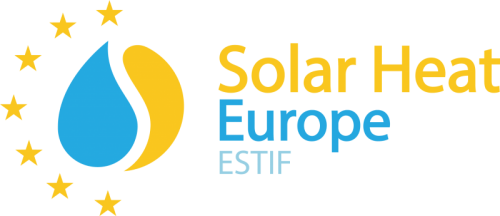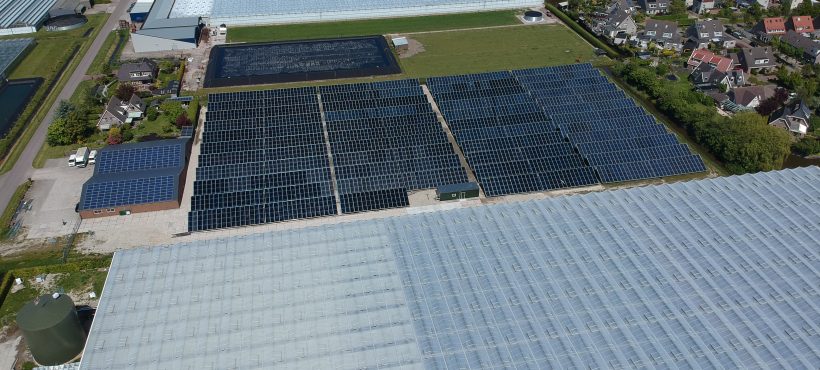The largest solar process heat system in Europe opened in October 2019 in the Netherlands. It consists of 9.300 m² of solar collectors that provides 5.000 MWh of renewable heat to a greenhouse for the sustainable cultivation of freesias (Tesselaar Freesia, North Holland, The Netherlands). The project has been realised by G2Energy and it can be categorized as Solar Heat for Industrial Processes (SHIP).
This new system more than doubles the size of the SHIP plant installed in the paper mill owned by the Lecta Group in Condat, France. The referred SHIP plant (4.213 m²) was the largest in Europe when it came into operation in January 2019.
Becoming CO2 neutral
Until today, solar heat in the Netherlands have been mostly used for small-scale installations, but larger systems are becoming a growing reality. and this new plant other then being the largest in the country, makes the greenhouses at Tesselaar Freesia completely CO2 neutral.
The system supplies Tesselaar greenhouse with energy over 400.000 m3 gas, so they won’t need gas for heating anymore! The solar collectors convert sunlight into usable heat, which is captured in a back-flow unit and transferred via a heat exchanger to the heating circuit.
In fact, the amount of heat generated in Tesselaar Freeisa is comparable to the annual consumption of around 300 households.
Drain back system and storage
The preheated water is stored in a 1.300 m3 thermal storage, to keep the greenhouses warm at night with heat generated during the day. Any excess heat produced will be stored in the ground with a heat-cold storage (WKO) system. In case of particularly hot days, the system will pump cold water up to cool the crops. In winter time, the hot water will be pumped up and the cooled water pushed back into the soil to keep it in balance.
According to Kees Molenaar of G2 Energy, the most important difference with other providers is that “we work with a drain-back system, which means that we simply work with water and therefore not with glycol or other chemicals. Something that growers, but also the province, strongly support”.
€ 500.000 subsidy from the European rural development program
The project involves an investment of around € 3 million and has the contribution of € 500.000 subsidy from the European rural development program for the province of Noord-Holland.
In the opening event, deputy Jack van der Hoek congratulated Tesselaar Freesia on the commissioning of the innovative system and he said that “I am proud that as a province we can contribute € 500.000 from the European rural development program. The Alton area is fast becoming one of the most sustainable greenhouse areas in the Netherlands. This project makes a substantial contribution to this and forms an inspiration for other entrepreneurs.
Testimony of Pip Tesselaar
Pip Tesselaar, owner of Tesselaar Freesia said at the opening event: “This project took several years of preparation. In 2015, we started research into making our freesia cultivation more sustainable. This brought us to Denmark, where solar thermal is already being used on a larger scale. With the solar thermal system we harvest heat in the form of hot water all year round. This heat is then applied directly as much as possible to heat the greenhouse”.
Sources of information:
- G2Energy
- Floral daily
- Bloemen planten
- Onder glas
- Noord-Holland Noord Development Company
- LTO Ledenvoordeel


Leave a Reply